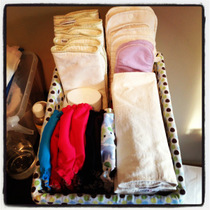 Becoming a parent is a huge learning curve. There are so many products on the market and so many opinions on what you should and shouldn't do. After having 2 children, I've learned a lot about the things you need and the things you can pass on. Lately, I've had a few friends and colleagues ask about my experience with some of the baby things we used so I figured it would be easiest to blog about it all! I should start by saying, we were/are minimalists when it comes to the 'stuff.' I even had a few people comment about how there was 'nothing' on our baby registry- we pretty much stuck to just the cloth diapers we wanted! So here is the stuff we loved, passed on and things we would have changed! (Also, I have no affiliation with any of the products or companies- just one holistic Momma's experience!) Diapering
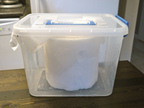 Homemade Bum Wipes Homemade Bum Wipes
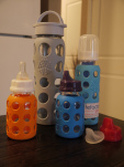 LifeFactory bottles with all the caps and adult water bottle. LifeFactory bottles with all the caps and adult water bottle. Feeding
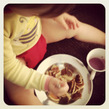 Lunchbot stainless steel plate. Lunchbot stainless steel plate.
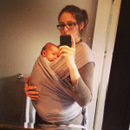 Caden 17 days old. Caden 17 days old. Transporting Carriers/Babywearing: I love babywearing! It is by far my favourite way to transport my kidlets! We did get a stroller and my husband calls it our most expensive dust collector...although I still think a stroller is a necessary item. I have used a few different carriers and I find each has their pros and cons.
 Hanging out in the sling at St Jacobs. Hanging out in the sling at St Jacobs.
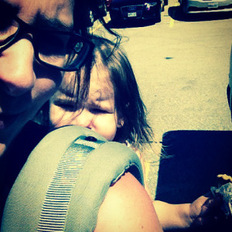 Lily 3 years old, 30ish pounds in the back carry. Lily 3 years old, 30ish pounds in the back carry. Structured Carrier: We originally registered for and got a Baby Bjorn. I did not like it. I found it was very hard on my back and I don't think I ever really wore it. My husband used it a handful of times and that was it. I also read a bunch of reviews (after we got it of course) about how it can be very hard on baby's hips which turned me off as well. However, when my second was born I got a bit more pushed to get a structured carrier. I knew trying to wrangle a 3 year old and manage a newborn was not going to be an easy feat, especially with our weekly visits to St Jacob's Farmer's Market. I looked into a few different ones and ended up going with the Ergo. My butterball son was born pretty big, so I wasn't sure whether we needed the infant insert. Thankfully we waited until after he was born to purchase it and I was able to take him and the carrier to my favourite baby store (Snuggle Bugz) to 'pre' test out the infant insert. Sure enough, there was no getting our fatty baby into it. I love this carrier! I have used it with both my kids- my 3 year old as a backpack and my infant in the side and front carry. It isn't the best carrier for small infants as it requires their legs to be spread pretty wide (for hip support) and I found it wasn't until about 5/6 mos that my son really started fitting it well. You can rig it to work before then but it's not really ideal. The infant insert would also help, as long as your infant isn't too big for it. 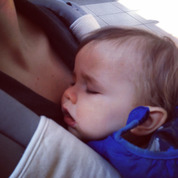 Our son was born at 8 lbs 10.5 oz and at 6 weeks was 13 lbs 7 oz and 23.5in- size wise too big to fit in the insert but development wise (hip range of motion and neck support) still needed the extra support. Because of this, I would recommend waiting on the insert until baby is born to make sure you can use it/need it. I find it super comfortable to use, even with my daughter who is about 32 lbs. My son loves it and has no problem falling asleep in it and it is amazingly easy to discreetly nurse while wearing it! We do have the original carrier which is only a 3 position carrier- back, side and front (facing you), however, since we got it, Ergo has come out with a 360 carrier which has the 3 positions plus a front carry facing out. I think if they had released the 360, I would have splurged on it but I haven't researched it enough or tried it to say for sure.  We also got the organic bamboo teether covers (the white covers in the photo above) since our son is like a beaver, but I wouldn't have needed them with my daughter. And another really cool thing about the Ergo is that they make kid size doll Ergo carriers! My daughter LOVES being just like Mommy! 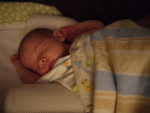 Just lounging in the Snuggle Nest! Just lounging in the Snuggle Nest! Sleeping
 Planning his escape- night vision. Planning his escape- night vision. Turns out, it's all wifi these days! We couldn't even get the camera we had. So I got a D-Link wifi baby camera to test out- I wasn't prepared to go wifi and I had a toddler and 6 mos old so I grabbed what I could and brought it home. As I waited for my warranty gift card to arrive so I could return and re-buy my camera, I thought about what I wanted to do- baby monitor cameras are over double the price of regular wifi cameras and essentially do the same job. The baby monitor camera has the added feature of 2-way speakers aka you can talk to baby through the camera and you can play music through the camera. Both the Summer Infant and Motorola sets had these features and we NEVER used them. Talking to your baby when they are trying to sleep is game over. Both the regular and baby wifi cameras have similar display quality, night vision, motion detection/notification, sound, recording function and picture function. But the regular camera is about a third of the price of the baby camera. 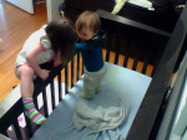 Inseparable- day vision. Inseparable- day vision. So we decided to go with a regular D-Link wifi camera- 2 actually, one for my son's room and one for my daughter's, and they are perfect! You operate both using a downloadable app and as an added bonus compared to the camera/handheld display type, you can access the camera from anywhere! I can check my kids from work if I want to right from my iphone! I love these cameras! Even once our kids are too old for monitors we can transition these to their intended security camera purpose. The one downside of wifi vs the traditional set is they aren't as portable. You can't really take it with you on a trip without needing to set up the camera all over again on a new network and you can't pan with these, the cameras are fixed and have to be moved manually. Even with these limitations, for me wifi benefits surpass the down sides. 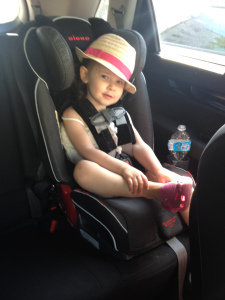
So, I think I've hit all the big items, at least I can't seem to think of anything else! I will be doing a continuation post on cloth diapering since it is such a huge topic and likely a toddler/preschool post since my daughter is now 3 and a half and there have been some things we have found that we love for this age group...so stay tuned! Hope you find it all helpful! Disclaimer: Naturopathic Doctors strive to provide individualized health care. The information contained in these topics is not intended nor implied to be a substitute for professional medical advice, it is provided for educational purposes only. This information shouldn’t take the place of seeing an ND for individualized health recommendations.
0 Comments
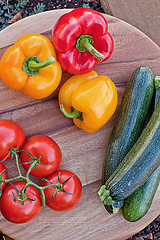 Photo Credit: Lili B. Capaccetti via Compfight cc Photo Credit: Lili B. Capaccetti via Compfight cc If I had to pick what causes some of the most confusion when it comes to discussing nutrition, I think I would have to go with carbohydrates. When people hear the word, most immediately think of bread, and I would even say grains for that matter. Many don't even realize that all vegetables are considered carbohydrates, as well as, all fruits. So let's answer some common questions. What is a carbohydrate?
Are Complex carbs really better?
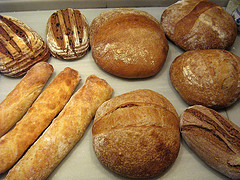 Photo Credit: Ibán via Compfight cc Photo Credit: Ibán via Compfight cc I thought whole grains were better? How can that be if it's absorbed the same?
And what about gluten?
Gluten Sensitivity? Celia? What's the Deal?
It seems everyone is gluten sensitive these days, why?
But I've heart Gluten-Free is often worse than the 'regular' stuff?
So what to do?
Disclaimer: Naturopathic Doctors strive to provide individualized health care. The information contained in these topics is not intended nor implied to be a substitute for professional medical advice, it is provided for educational purposes only. This information shouldn’t take the place of seeing an ND for individualized health recommendations. |
AuthorWrite something about yourself. No need to be fancy, just an overview. Archives
August 2016
Categories
All
|

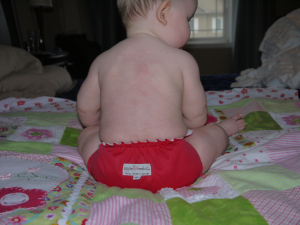
 RSS Feed
RSS Feed
